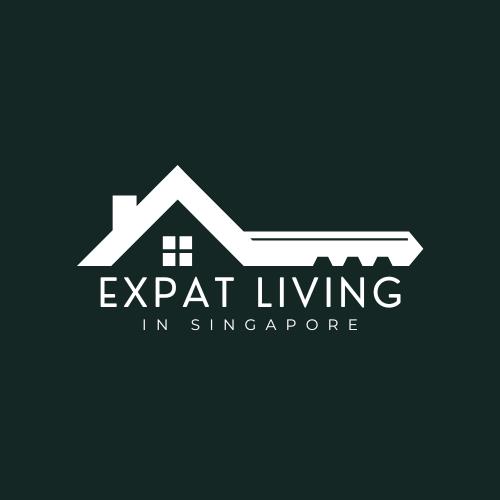Welcome to Singapore, a vibrant metropolis where a thriving economy meets a rich tapestry of cultural traditions.
For the global talent drawn to its shores by multinational corporations and a dynamic startup scene, the city-state offers immense opportunities for career growth. However, achieving a seamless transition into the Singaporean workplace requires more than just professional expertise.
Understanding the intricate Singapore work culture—a unique blend of Asian values and Western influences—is crucial. This guide offers valuable insights into the cultural nuances that define the country’s work culture, helping foreign nationals avoid common cultural mistakes and thrive professionally.
1. The Singaporean Business Landscape: A Confluence of Cultures

Singapore’s success as a global business hub is no accident. The Singapore government has cultivated a pro-business environment that attracts international companies and fosters innovation. Yet, beneath the modern veneer of this economic powerhouse lie deep-seated cultural norms.
Singapore’s business culture is a fascinating mix where operational efficiency is prized, but not at the expense of traditional values. For professionals arriving from Western countries, adapting to this environment means appreciating the subtle yet significant cultural differences that shape daily interactions and workforce expectations.
2. Hierarchy and Respect: The Pillars of the Workplace

One of the first things foreign nationals will notice is the strong emphasis on hierarchy. Unlike the flatter structures common in many modern workplaces in the West, Singaporean organizations often have clear, respected lines of authority. This structure is a cornerstone of the Singaporean work culture, rooted in Asian values that prioritize order and respect for seniority.
Respecting authority is paramount. High-level employees and senior managers are shown deference, and their decisions carry significant weight. Junior employees are expected to listen attentively and execute tasks diligently, with challenges to authority being generally frowned upon. This isn’t about stifling creativity; it’s about maintaining a harmonious work environment.
Effective communication in this context means presenting ideas respectfully, often in one-on-one settings, rather than openly questioning superiors in a group. When exchanging a business card, it’s customary to present and receive it with both hands, taking a moment to read it as a sign of respect.
3. The Drive for Efficiency and Pragmatism

The Singaporean workplace is geared towards results. There is a relentless focus on operational efficiency and pragmatic decision-making. Processes are valued, but outcomes are revered. This drive is a key component of the nation’s success, creating a competitive job market where performance is closely measured. Singaporean employees are often highly dedicated, with a focus on self-improvement and achieving tangible goals. The emphasis is on practical solutions that work, rather than getting lost in theoretical debates. This pragmatic approach fosters innovation by encouraging rapid testing and iteration, ensuring that new ideas are quickly put into practice to see if they deliver results.
4. Saving Face and Maintaining Harmony

The concept of “face”—a person’s reputation, dignity, and social standing—is a critical cultural nuance in Singapore and many other Asian countries. Preserving face for oneself and others is essential for maintaining a harmonious work environment. This means that direct confrontation is often avoided. Criticism, especially of a colleague, is delivered privately and with great tact. Publicly pointing out a mistake is a significant faux pas that can cause embarrassment and damage team cohesion.
Instead of a direct “no,” you might hear more indirect responses like “This could be challenging,” or “Let me review this.” Understanding this indirect communication style is vital for building a strong business relationship. It’s not about being evasive; it’s about navigating interactions with cultural sensitivity to ensure no one loses face. Personal glory takes a backseat to collective success.
5. Kiasu Culture and Career Advancement

Kiasu, a Hokkien term meaning “fear of losing out,” is a well-known aspect of Singaporean culture that permeates the workplace. It fuels a competitive spirit and a strong desire for career advancement. In Singapore’s competitive job market, employees are highly motivated to succeed and continuously seek opportunities for career growth. This can manifest as long working hours and a dedication to exceeding expectations.
While this drive contributes to the country’s thriving economy, it can also lead to work-related stress. Singaporean companies are increasingly recognizing this and are starting to place a greater focus on employee well-being. For many, the pursuit of career advancement opportunities is linked to achieving personal wealth and security, making the workplace a highly dynamic and ambitious environment.
6. Work-Life Balance: An Evolving Conversation

Traditionally, the work culture in Singapore has been characterized by long working hours and a blurring of lines between professional and personal life. However, the conversation around work-life balance is rapidly changing. Spurred by global trends and a growing awareness of mental health, both employees and employers are reconsidering what a healthy work environment looks like.
The Singapore government and Singapore’s Ministry of Manpower have encouraged companies to adopt more flexible work arrangements. The Employment Act provides a framework for working hours and overtime, but the company culture ultimately dictates the day-to-day reality. Many global companies are leading the charge by implementing policies that support employee well-being, from flexible schedules to resources for mental health. Still, the expectation of dedication remains high, and professionals must learn to navigate their specific workplace culture to find a sustainable balance.
If you’re new to Singapore or still getting the hang of the public transport network, be sure to check out our Singapore MRT Guide for Expats to make your daily commute easier.
7. Communication: The Art of Reading Between the Lines

Effective communication in a Singaporean workplace is about more than just words. Body language, tone, and what is left unsaid are often just as important. Due to the emphasis on harmony, communication can be indirect. Foreign nationals need to develop their ability to read these subtle cues to understand the true meaning behind a message.
For example, a non-committal response might signal disagreement, while a lack of questions in a meeting could indicate confusion rather than consensus. Building trust is key to unlocking more direct communication. Taking the time to build a personal business relationship with colleagues can lead to more open and honest dialogue. Physical contact, especially between members of the opposite sex, is generally kept to a minimum in professional settings.
8. Navigating a Diverse Workforce with Cultural Sensitivity

Singapore stands as a model of cultural diversity, with a workforce comprising individuals of Chinese, Malay, Indian, and Eurasian descent, alongside a large contingent of foreign nationals. This diversity is a major strength, but it requires a high degree of cultural sensitivity. Understanding and respecting the different cultural norms and traditional values is essential.
This includes being mindful of various religious holidays, dietary restrictions, and social customs. For instance, when organizing team events, it’s important to consider options that cater to everyone. Showing genuine interest in a colleague’s culture is a great way to build rapport and enhance collaboration. Successful integration depends on recognizing and valuing these differences, which ultimately strengthens team cohesion and fosters a more inclusive workplace culture.or Myanmar, among other countries. Take time to learn about her culture and holidays. This small effort can go a long way.
9. Business Etiquette and Dress Code

First impressions matter, and adhering to local business etiquette is a sign of respect. The dress code in most Singaporean companies is business casual. For men, this typically means long-sleeved shirts and trousers; leather shoes are standard. A tie or jacket may be required for client-facing roles or meetings with high-level employees. For women, appropriate-length dresses, skirts, or smart trousers are the norm. While some modern workplaces, particularly in the tech sector, have a more relaxed dress code, it’s always best to err on the side of formality initially.
10. Practical Strategies for a Seamless Transition

For expatriates and foreign professionals, adapting to the Singaporean work culture is a journey of learning and observation. Here are some practical strategies:
- Listen and Observe: Spend your initial weeks observing workplace dynamics before making assumptions. Pay attention to how colleagues interact and how decision-making happens.
- Build Relationships: Invest time in getting to know your colleagues on a personal level. Go for lunch, ask about their families, and show genuine interest in their lives outside of work.
- Embrace Indirectness: Learn to soften your language. Instead of making direct demands, phrase requests as questions.
- Seek Mentorship: Find a local colleague who can offer valuable insights and guide you through tricky cultural situations.
- Focus on the Team: Emphasize collective goals over personal glory. Show that you are a team player committed to the group’s success.
Conclusion: Embracing the Uniqueness of Singapore Work

Navigating the Singaporean work culture is a rewarding experience that offers significant opportunities for professional and personal growth. While there may be strict workplace rules and high expectations, the environment also fosters discipline, efficiency, and a strong sense of collective achievement. By understanding the importance of hierarchy, harmony, and relationship-building, foreign professionals can not only succeed but also contribute positively to their work environment.
Adapting with an open mind and a willingness to learn will not only improve job satisfaction and overall well-being but will also allow you to fully appreciate the unique and dynamic character of Singapore work.

